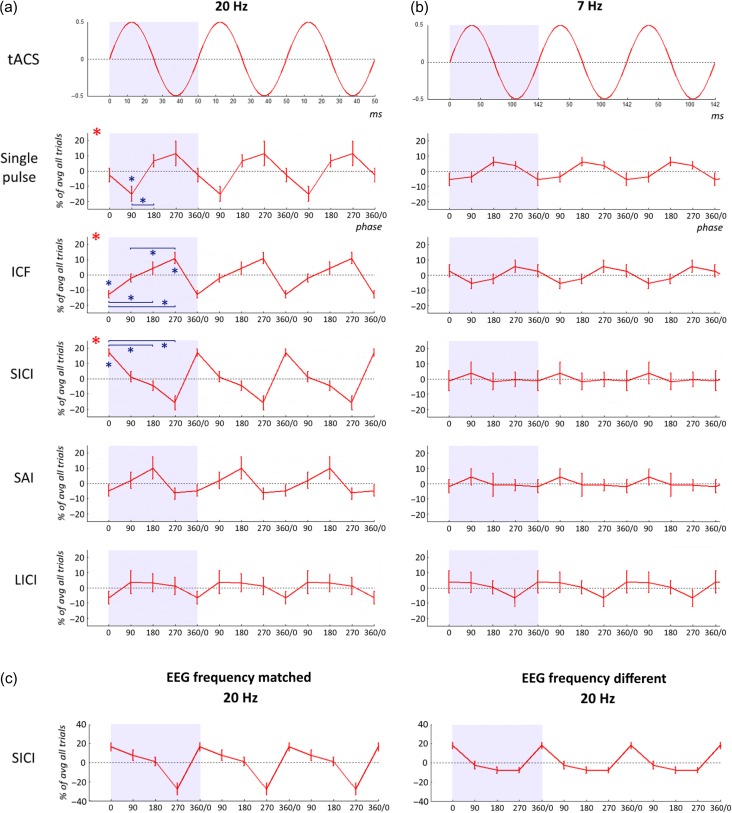Figure 4.
Phase dependency of tACS effects on cortical excitability. (a) Phase-dependent MEP size modulation during 20 Hz (motor cortex resonance frequency) tACS. Percentage increase or decrease of MEP size according to the stimulation phase (0°, 90°, 180°, or 270°) versus the mean of the MEPs with TMS delivered at all 4 phases. For single pulse, ICF, and SICI protocols, the MEP size was modulated in a phase-dependent manner (two-way ANOVA with factors “protocol” (5 levels: single pulse, ICF, SAI, SICI, and LICI) and “phase” (4 levels: 0°, 90°, 180°, and 270°) identified a significant interaction between factors “protocols” × “phase” (F(5,69) = 3.021; P = 0.016). Red asterisks denote a significant effect of the factor “phase” (one-way ANOVA; single pulse: P = 0.024, ICF: P < 0.001, and SICI: P = 0.024). Blue asterisks denote significant post hoc t-tests P < 0.05. P values are presented after Bonferroni correction for multiple comparisons. (b) Phase-dependent MEP size modulation during 7 Hz (nonmotor cortex resonance frequency) tACS. Percentage increase or decrease of the MEP size according to the stimulation phase (0°, 90°, 180°, or 270°) versus the mean of the MEPs with TMS delivered at all 4 phases. Group mean and standard errors of the mean are shown (n = 15 healthy subjects). Three cycles of phase-dependent modulation are shown for each frequency for clarity. (c) Phase-dependent SICI modulation during 20 Hz (motor cortex resonance frequency) tACS according to whether or not tACS was matched to spontaneous beta frequency. Left and right panels show SICI modulation in “EEG frequency matched” ( n = 7) and “EEG frequency different” ( n = 7) groups, respectively. Note that the y-axis is double than in (a) and (b).

